Long-duration M6.3 solar flare erupts from AR 3229, CME produced, S1 solar radiation storm
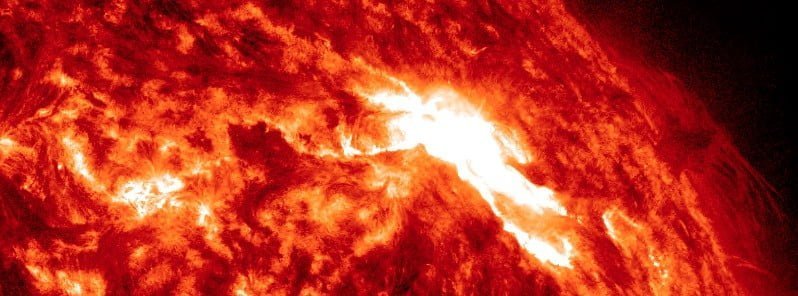
A long-duration solar flare measuring M6.3 erupted from Active Region 3229 at 19:44 UTC on February 25, 2023. The event started at 18:40 and ended at 20:27 UTC.
A Type II radio emission with an estimated velocity of 528 km/s was detected at 19:23 UTC, indicating a coronal mass ejection (CME) was associated with the flare event.
In addition, a 10cm Radio Burst (tenflare), lasting 22 minutes and with a peak flux of 500 sfu, was associated with this event.
This indicates that the electromagnetic burst associated with the solar flare at the 10cm wavelength was double or greater than the initial 10cm radio background. This can be indicative of significant radio noise. This noise is generally short-lived but can cause interference for sensitive receivers including radar, GPS, and satellite communications.
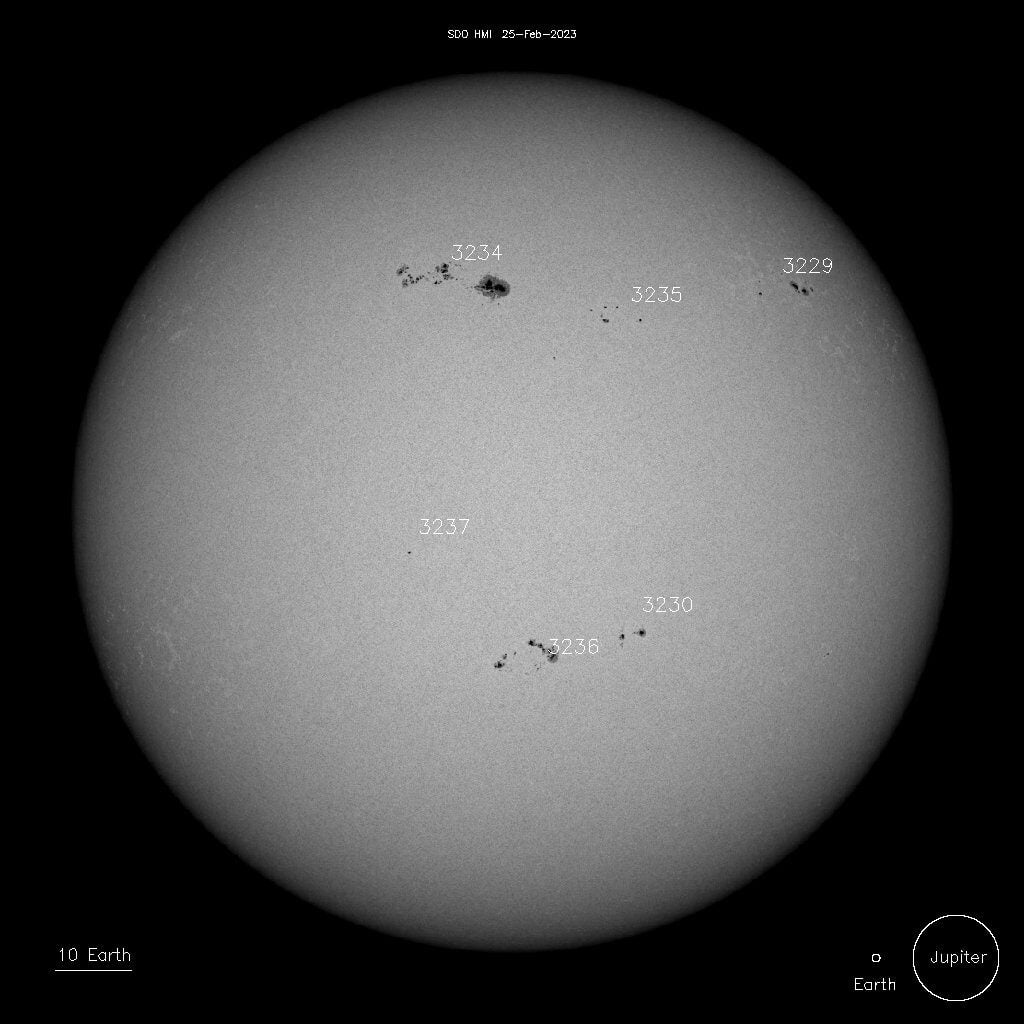

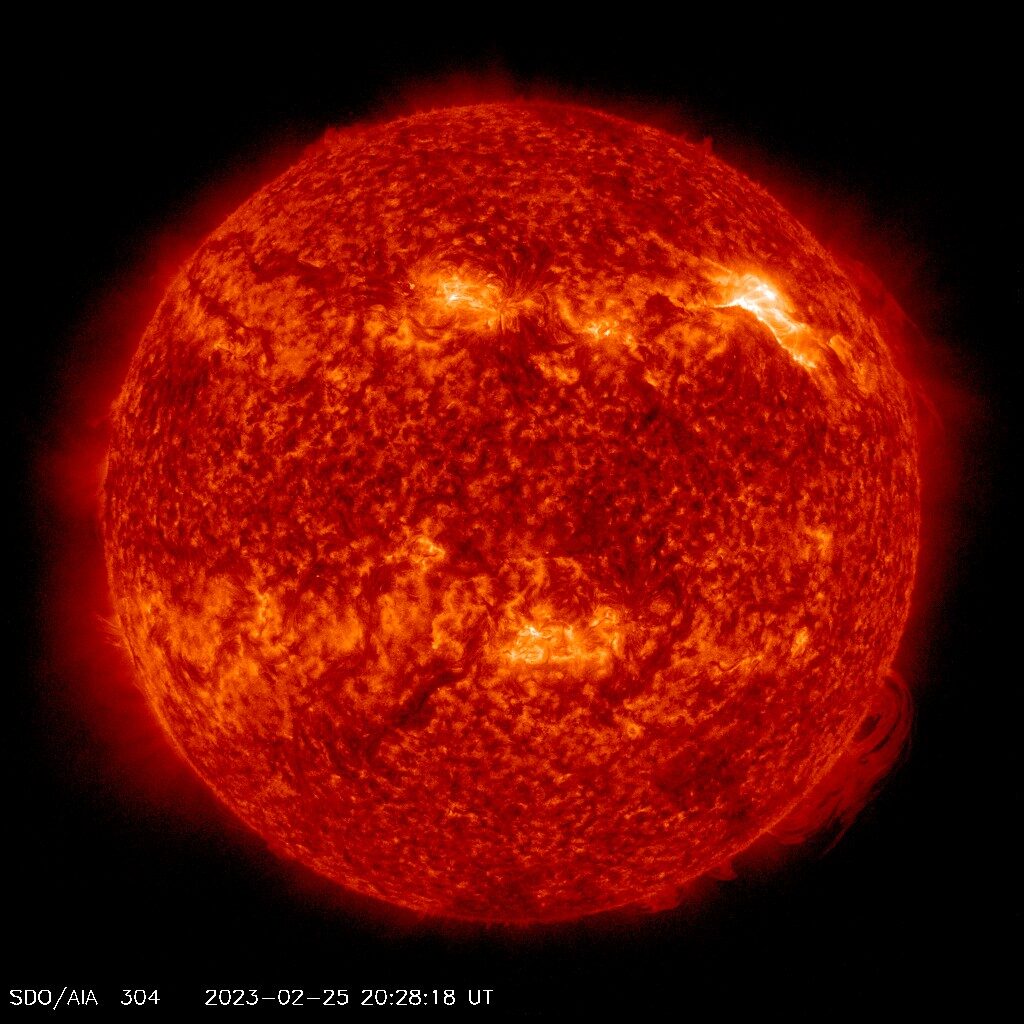

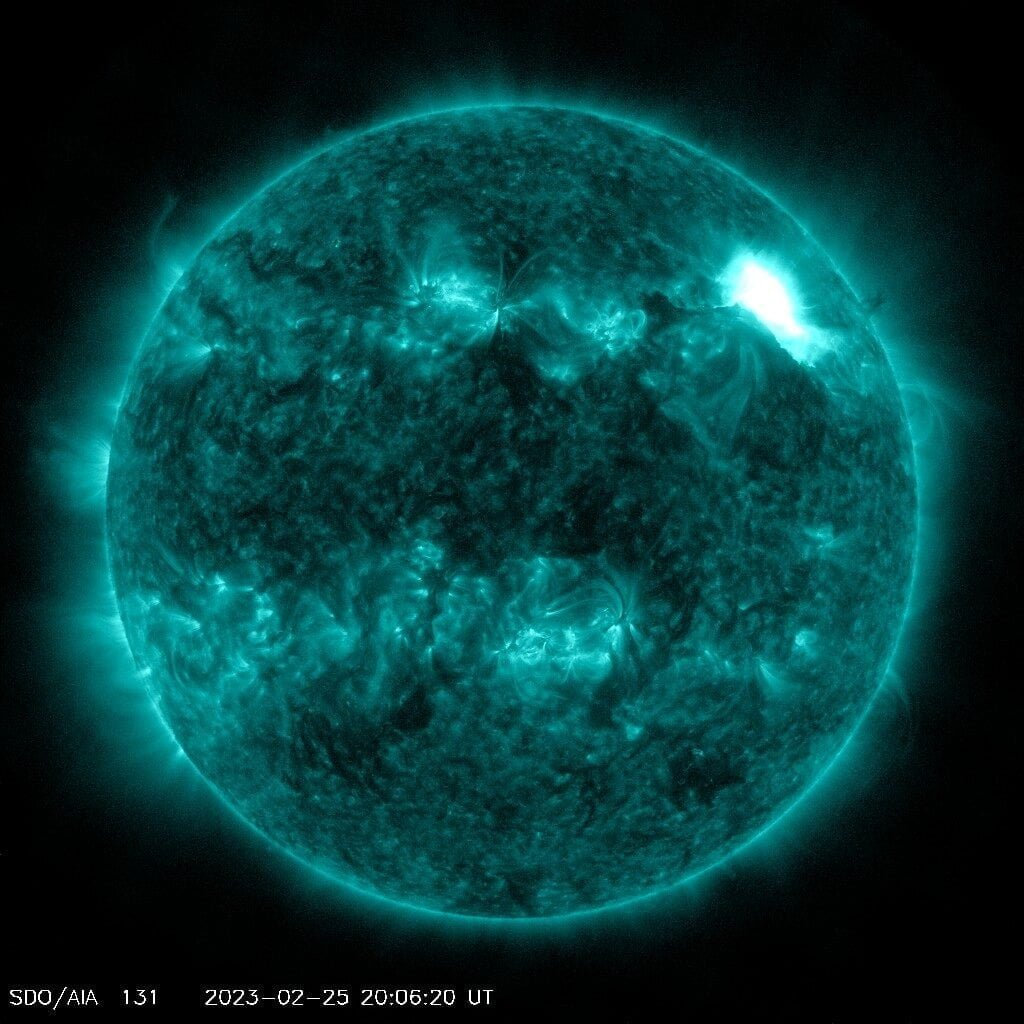

Radio frequencies were forecast to be most degraded over the Pacific Ocean, SW United States, Central America, and parts of NW South America at the time of the flare.
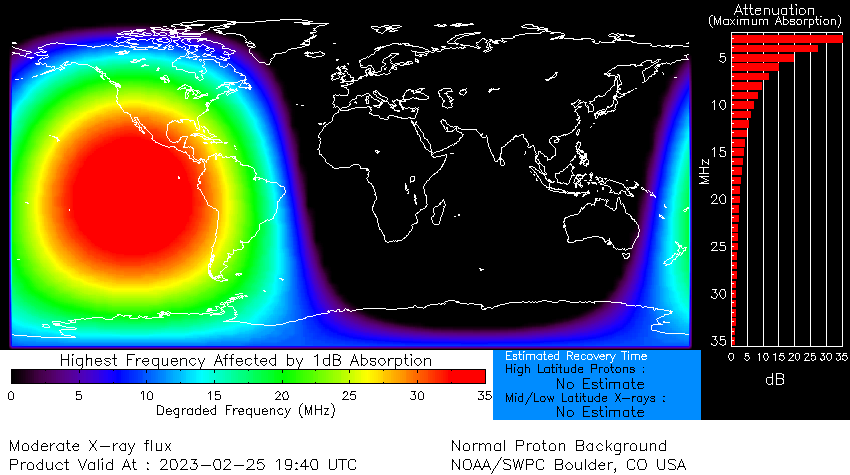

High-energy particles started sharply rising at 20:20 UTC and reached the 10MeV warning threshold by 21:10 UTC — S1 – Minor Solar Radiation Storm (Solar Proton Event). Such events happen approximately 50 times per solar cycle.
Expected impacts:
- Biological: None.
- Satellite operations: None.
- Other systems: Radio – Minor impacts on polar HF (high frequency) radio propagation resulting in fades at lower frequencies.
Solar Proton Events (SPE) result from fast coronal mass ejections. During an SPE, satellites experience dramatically increased bombardment by high-energy particles. Fluxes of particles with energies ≥ 10 MeV can reach 43 500 protons/cm2/sec/ster. Single Event Upset rates in spacecraft electronics increase with high fluxes since there is a higher likelihood of impact on a sensitive location. In addition, these high energy particles can access the polar ionosphere and create an enhanced region of ionization (called the ‘D-Region’) which interferes with HF radio communication in these areas.
High-energy particles can reach Earth anywhere from 20 minutes to many hours following the initiating solar event.
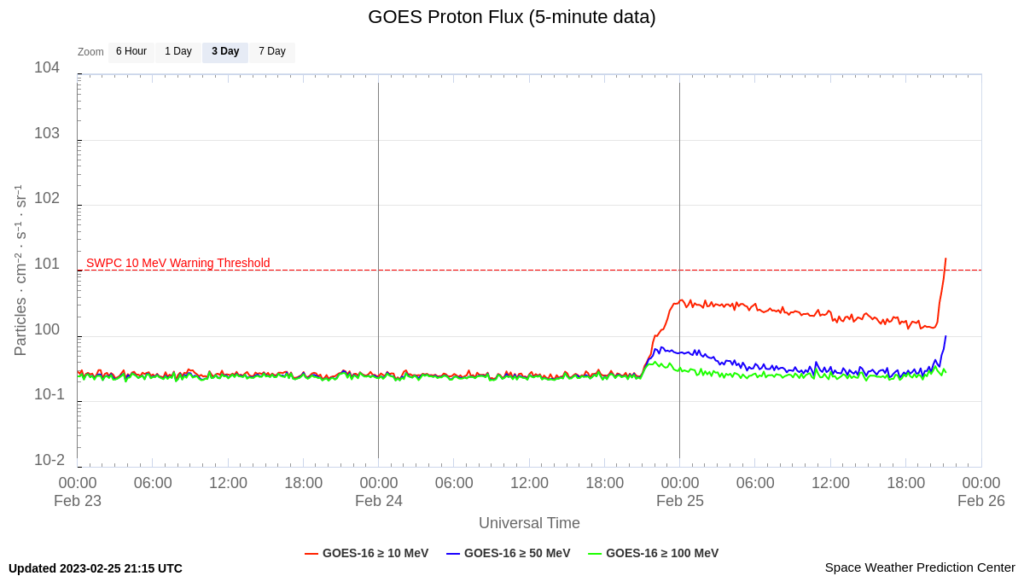

This same region produced a long-duration M3.7 solar flare at 20:30 UTC on February 24. Part of the CME it produced will hit Earth on February 27.
As a result, a G2 – Moderate geomagnetic storm watch is in effect for February 27.
Update
Coronal mass ejection (CME) produced by a long-duration M3.7 solar flare at 20:30 UTC on February 24, 2023, reached Earth at 19:25 UTC on February 26.
The impact of this event is anticipated to be followed by a glancing blow from another CME generated by the M6.3 solar flare on February 25, expected to arrive during the afternoon hours on February 27.
The resulting geomagnetic storm activity is expected to be significant due to both CMEs interacting with a negative-polarity coronal hole high-speed stream (CH HSS).
This interaction has the potential to produce G3 – Strong or even higher levels of geomagnetic storm activity.
Featured image: M6.3 solar flare on February 25, 2023. Credit: NASA SDO/AIA 304, Helioviewer, The Watchers



Commenting rules and guidelines
We value the thoughts and opinions of our readers and welcome healthy discussions on our website. In order to maintain a respectful and positive community, we ask that all commenters follow these rules.